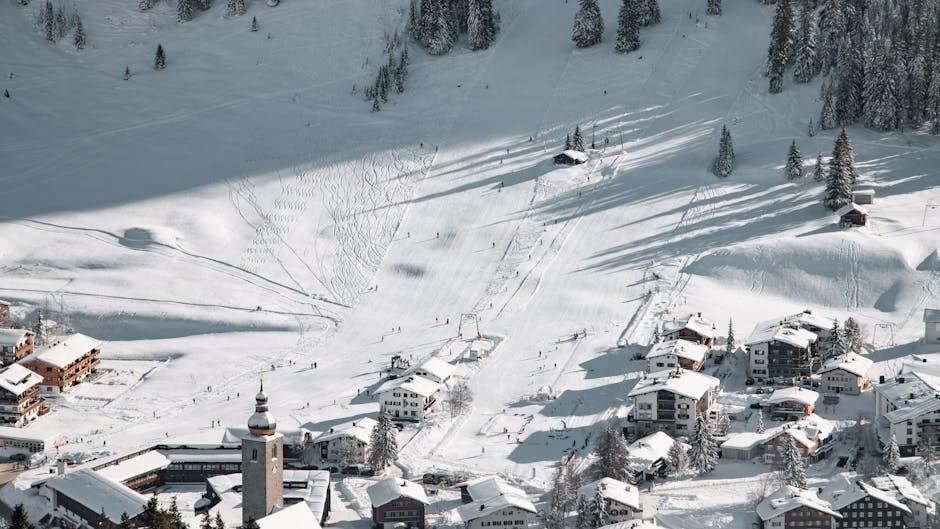Overview of AMS 2700
AMS 2700, controlled by SAE International, defines requirements for passivating corrosion-resistant steel parts, removing free iron and contaminants․ It enhances corrosion resistance in aerospace components, ensuring reliability in harsh conditions․ The specification includes various types and classes․
Definition and Purpose
AMS 2700, an Aerospace Material Specification developed by SAE International, defines the requirements for passivation of corrosion-resistant steels․ The purpose of this specification is to ensure the removal of free iron or other less noble contaminants from the surfaces of stainless steel parts․ This process enhances the corrosion resistance of components, making them more durable and reliable in demanding environments, particularly within the aerospace industry․ AMS 2700 aims to provide a standardized method for achieving optimal passivation, ensuring consistent quality and performance of stainless steel parts used in critical applications, thus extending their lifespan and preventing premature failure․
AMS 2700 and Passivation of Stainless Steel
AMS 2700 is a specification that outlines the passivation process for stainless steel, enhancing its corrosion resistance by removing surface contaminants․ This ensures durability and reliability, especially in aerospace applications․
Enhancing Corrosion Resistance
AMS 2700 aims to significantly improve the corrosion resistance of stainless steel components․ By removing free iron and other less noble contaminants from the surface, the passivation process ensures a more durable and reliable material․ This is crucial in environments where stainless steel is exposed to harsh conditions, preventing premature degradation․ The standard outlines specific methods and requirements to achieve optimal corrosion protection․ Proper passivation according to AMS 2700 extends the lifespan of components, reducing maintenance and replacement costs․ Compliance with AMS 2700 is essential for applications requiring high levels of corrosion resistance․

Key Differences Between AMS 2700 Revisions
The AMS 2700 revisions, such as the shift from E to F, introduce significant changes․ These updates address ordering information, corrosion resistance, and testing methods․ These revisions ensure enhanced clarity and improved material performance․
AMS 2700F vs․ AMS 2700E
AMS 2700F, released in March 2018, supersedes AMS 2700E from November 2011․ Key differences include updated ordering information and changes to paragraphs addressing methods and corrosion resistance․ Specifically, revisions impact water immersion and the copper sulfate test․ The newer standard clarifies restrictions for high-strength steels prone to hydrogen embrittlement․ AMS 2700F results from a five-year review and update․ These changes ensure clearer, more precise guidelines for passivation processes․ Ultimately, the updated standard enhances the reliability and effectiveness of stainless steel passivation within the aerospace industry and beyond․

Passivation Methods in AMS 2700
AMS 2700F outlines two main passivation methods: nitric acid and citric acid passivation․ Each method involves specific combinations of concentration, temperature, and time to achieve optimal corrosion resistance for stainless steel parts․
Nitric Acid Passivation
Nitric acid passivation, a key method in AMS 2700, effectively removes surface contaminants from stainless steel․ Method 1, essentially unchanged from QQ-P-35, employs nitric acid baths․ This process enhances corrosion resistance by dissolving tramp metallic elements․ AMS 2700 specifies various combinations of nitric acid concentration, temperature, and immersion time․ Proper implementation ensures compliance and optimal passivation, crucial for aerospace applications․ The standard provides guidelines for selecting appropriate parameters, leading to enhanced durability of stainless steel components․ Following nitric acid passivation, testing verifies process effectiveness․
Citric Acid Passivation
Citric acid passivation, another method within AMS 2700, offers an alternative to nitric acid for removing surface contaminants․ AMS 2700 outlines parameters for citric acid passivation, including concentration, temperature, and immersion time․ These parameters ensure effective removal of free iron and less noble contaminants․ Selecting the appropriate method depends on the specific stainless steel grade․ Citric acid passivation is often favored for its environmental benefits and reduced safety concerns․ Post-passivation testing verifies the effectiveness of citric acid treatment, ensuring compliance with AMS 2700 standards and optimal corrosion resistance․ This method is suitable for various stainless steel components․

Types and Classes within AMS 2700
AMS 2700 includes eight types (1-8) and four classes (1-4), defining specific passivation treatments․ These classifications dictate process parameters, ensuring proper treatment for different stainless steel alloys and applications within the aerospace industry․
Types 1-8
Within AMS 2700, Types 1 through 8 designate different passivation methods, primarily differentiated by the acid used and its concentration․ These types encompass nitric acid-based solutions with varying sodium dichromate additions, citric acid solutions, or other proprietary chemical treatments designed to remove surface contaminants․ The selection of a specific type depends on the stainless steel alloy, desired corrosion resistance, and compatibility with the component’s design․ Some types are better suited for certain grades, considering factors like sensitization or susceptibility to intergranular attack; Careful selection ensures optimal passivation without compromising material integrity․
Classes 1-4
AMS 2700 designates Classes 1 through 4 to define the acceptance criteria following passivation, primarily based on corrosion resistance testing․ These classes dictate the permissible level of surface reactivity or evidence of corrosion after specific test exposures, such as salt spray or humidity testing․ Class 1 typically represents the most stringent requirements, demanding the highest degree of corrosion resistance, while Class 4 indicates a less demanding level․ Selection of the appropriate class depends on the intended application and environmental conditions the stainless steel component will encounter, guaranteeing performance and longevity․
Compliance with AMS 2700
Adhering to AMS 2700 ensures effective removal of surface contaminants from corrosion-resistant steels․ It provides standardized passivation processes, enhancing material performance, especially crucial in demanding aerospace applications, contributing to reliability and longevity․
Benefits of AMS 2700 Compliance
Compliance with AMS 2700 ensures superior corrosion resistance for stainless steel components, which is paramount for applications in harsh environments․ By adhering to this standard, manufacturers can guarantee the removal of free iron and other less noble contaminants, thus preventing premature degradation and maintaining structural integrity․ This results in extended product lifecycles and reduced maintenance costs․
Moreover, AMS 2700 compliance demonstrates a commitment to quality and reliability, which is particularly valued in industries like aerospace․ Meeting these stringent requirements enhances product reputation and builds trust with customers, ultimately leading to increased market competitiveness and business opportunities․ The standard’s detailed specifications also provide a clear framework for consistent and repeatable passivation processes․
Applications of AMS 2700
AMS 2700 finds widespread application in industries requiring high corrosion resistance․ Specifically, its passivation methods are crucial for stainless steel components used in aerospace, ensuring reliability and longevity in demanding environments․
Aerospace Industry
The aerospace industry relies heavily on AMS 2700 for passivating stainless steel components due to its stringent requirements for corrosion resistance․ AMS 2700 ensures the reliability and longevity of critical parts in aircraft and spacecraft․ Small stainless steel components fabricated for the aerospace industry widely use this specification․ Passivation under AMS 2700 guarantees that these parts can withstand harsh environments, maintaining structural integrity and preventing failures․ Compliance with AMS 2700 is essential for safety and performance․ It’s a standard the industry trusts․
Relation to Other Standards
AMS 2700 shares similarities and differences with other passivation standards like ASTM A967․ Both address stainless steel passivation, but AMS 2700 is tailored for aerospace, with stricter requirements and specific industry needs addressed․
Comparison with ASTM A967
While both AMS 2700 and ASTM A967 address the passivation of stainless steel, their scopes and applications differ; AMS 2700, driven by SAE International, is specifically designed for aerospace components, emphasizing stringent requirements for corrosion resistance and material performance under harsh conditions․ It details specific types and classes tailored to aerospace needs․ ASTM A967, managed by ASTM International, offers a broader scope applicable across various industries, including medical and food processing․ While both standards aim to remove surface contaminants and enhance corrosion resistance, AMS 2700 typically mandates more rigorous testing and documentation to ensure the reliability of critical aerospace parts․
Removal of Surface Contaminants
AMS 2700 focuses on removing free iron and less noble contaminants from corrosion-resistant steel surfaces․ This process ensures enhanced corrosion resistance, crucial for the reliable performance of components in demanding environments․
Free Iron and Less Noble Contaminants
The AMS 2700 specification addresses the critical need to remove free iron and other less noble contaminants from the surfaces of corrosion-resistant steel parts․ These contaminants, if left untreated, can compromise the stainless steel’s inherent resistance to corrosion․ The standard provides detailed procedures for ensuring thorough removal, which is vital for maintaining the integrity and longevity of components, particularly in demanding aerospace applications․ Effective removal of these surface impurities is paramount to prevent premature degradation and ensure reliable performance in corrosive environments, aligning with the stringent requirements of the AMS 2700 specification․

Suppliers and Services for AMS 2700 Compliance
Several companies offer passivation services compliant with AMS 2700, ensuring that stainless steel components meet aerospace standards for corrosion resistance․ These suppliers provide expertise in nitric and citric acid passivation methods․
Companies Offering Passivation Services
Numerous companies worldwide specialize in providing AMS 2700 compliant passivation services for stainless steel components․ These organizations offer expertise in both nitric and citric acid passivation methods, adhering to stringent aerospace material specifications․ Services often include pre-treatment cleaning, passivation processing, and post-treatment testing to verify compliance․ Companies like Advanced Plating Technologies and Rouging Solutions Pvt․ Ltd․ offer these services․ Selecting a qualified supplier ensures that components achieve the desired level of corrosion resistance, meeting the critical requirements of the aerospace industry and other demanding applications․ Consider their certifications and quality control processes․
Where to Find the AMS 2700 PDF
The latest version of AMS 2700 PDF can be accessed through the SAE International website․ It may also be available on GlobalSpec, or through authorized distributors of SAE standards․
Accessing the Latest Version
To access the latest version of the AMS 2700 PDF, begin by visiting the official SAE International website, as they are the organization that develops and maintains the AMS standards․ You can navigate to their standards section and search for “AMS 2700″․ Ensure you are looking at the most recent revision, such as AMS 2700F, which superseded AMS 2700E․
Alternatively, you may find the document available through engineering standards databases like GlobalSpec․ Keep in mind that accessing the full PDF document might require a subscription or a purchase from SAE International or an authorized distributor․
